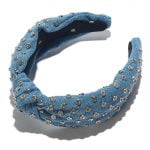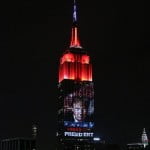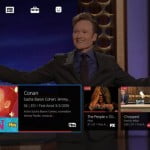 ‘
‘
The growth of the ecommerce industry has been very rapid over the past few years.
Many organizations and individuals are selling different products and services online to the point where the competition has gotten fierce and is even getting fiercer as everyone, through their ecommerce sites, fight for the attention of customers.
This makes the design of your ecommerce site a very crucial factor for success. It is something that has become very delicate and requires special attention, so you can achieve the best result. From catching the attention of a potential customer, to growing their interest and finally convincing them to buy your product or service, your site is the shop, the sales rep, customer service agent, and more.
Knowing this, your ecommerce site must be designed to attract more page views and maximize conversions. But certain ecommerce website design mistakes are very common, and they have huge negative effects on ecommerce sites. Just as sales persons are tasked with the job of getting people to buy products or services, and their performances are evaluated, it is important to do a very careful evaluation of your site and ascertain that it is yielding maximum results.
According to Tammy Everts, a senior researcher and evangelist at SOASTA, there are three common ecommerce website design mistakes to avoid. Look out for them, and if your site is a victim, make the necessary corrections.
Common Ecommerce Website Design Mistakes
The Page Appears Blank, then Suddenly Populates All Your Content at Once
According to Kissmetrics, the following issues usually affect the conversion rates for your website:
- 47 percent of consumers expect a Web page to load in two seconds or less.
- 40 percent of people will abandon a website that takes more than three seconds to load.
- A one second delay in page response can result in a 7 percent reduction in conversions.
These stats are from a study in 2009. If all that was true in 2009, the figures might have even grown worse by now, as online shoppers’ impatience keeps growing.
Instant gratification is what any are looking for when they turn to the Internet for purchases, and that is also what ecommerce promises. If your page takes time to load, appears blank at first then populates all at once later, or does not load all content simultaneously, such a first impression is capable of putting visitors and potential customers off. The problem can be from unoptimized images, poorly executed style sheets, analytic tags or ad network codes, etc.
There’s an Absence of Clear Call-to-Action
The reason why you have a website up and running is because you want to get certain response(s) from those who visit it. For you to get your desired result from your visitors and page viewers, your call-to-action (CTA) is very important. It lets the viewer know what you want them to do, and must be able to motivate and direct them to carry out the desired action or respond in the particular way you want. As important as this is, it is painfully true that not all calls-to-action are effective at achieving the desired conversions. From poorly designed, unattractive calls-to-action, to badly written, non-motivating ones, several mistakes make calls-to-action ineffective.
However, even after making efforts to get your call-to-action beautifully designed or written, and compelling, it still fails to perform maximally when it is the last thing to load.
Your call-to-action must not be hidden, or load lastly on the page. It is one of the first things you want your visitors to see. They should not be placed at the bottom of large images, rather at the top. Your visitors must not miss your call-to-action.
Your Pop-up Blocks the Rest of the Content
Pop-ups are cool. They offer some advantages like helping in increasing traffic conversions and in getting feedback from customers. Many times, pop-ups have proven to be more effective advert points than banner advertisements. They immediately grab the attention of the page viewer, interrupting them momentarily from what they are doing on the page. Some banner ads may be easily ignored and missed by viewers, but pop-ups, once deployed, are almost impossible to disregard.
Well, we cannot also deny the irritating feeling pop-ups bring to viewers when they are interrupted and made (compulsorily) to pause whatever they are doing or seeing on the page. This gets even worse when pop-ups appear immediately after a viewer gets onto a page.
And overly large pop-ups that block the entire page can be really annoying.
This interruption in the user experience can make a viewer close the page altogether. Another thing to avoid is pop-ups designed without the close or exit button clearly visible. Users don’t want to feel compelled. Pop-ups should be delayed for some seconds, and should be designed optimally, so as to complement the user experience.
Conversion is key for your ecommerce site, and anything that is capable of reducing it must be dealt with. These ecommerce website design mistakes can result in a huge annual sales loss. Watch out for them.
Image: Soasta
[“source-ndtv”]











